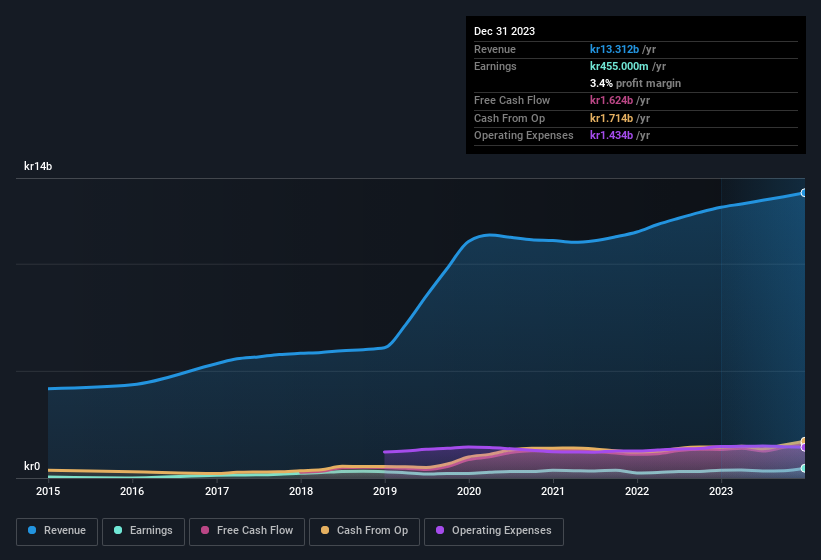- Sweden
- /
- Healthcare Services
- /
- OM:AMBEA
We Think Ambea's (STO:AMBEA) Profit Is Only A Baseline For What They Can Achieve
When companies post strong earnings, the stock generally performs well, just like Ambea AB (publ)'s (STO:AMBEA) stock has recently. Our analysis found some more factors that we think are good for shareholders.
Check out our latest analysis for Ambea

Zooming In On Ambea's Earnings
Many investors haven't heard of the accrual ratio from cashflow, but it is actually a useful measure of how well a company's profit is backed up by free cash flow (FCF) during a given period. In plain english, this ratio subtracts FCF from net profit, and divides that number by the company's average operating assets over that period. The ratio shows us how much a company's profit exceeds its FCF.
As a result, a negative accrual ratio is a positive for the company, and a positive accrual ratio is a negative. While it's not a problem to have a positive accrual ratio, indicating a certain level of non-cash profits, a high accrual ratio is arguably a bad thing, because it indicates paper profits are not matched by cash flow. That's because some academic studies have suggested that high accruals ratios tend to lead to lower profit or less profit growth.
For the year to December 2023, Ambea had an accrual ratio of -0.16. Therefore, its statutory earnings were very significantly less than its free cashflow. To wit, it produced free cash flow of kr1.6b during the period, dwarfing its reported profit of kr455.0m. Ambea shareholders are no doubt pleased that free cash flow improved over the last twelve months.
That might leave you wondering what analysts are forecasting in terms of future profitability. Luckily, you can click here to see an interactive graph depicting future profitability, based on their estimates.
Our Take On Ambea's Profit Performance
As we discussed above, Ambea's accrual ratio indicates strong conversion of profit to free cash flow, which is a positive for the company. Because of this, we think Ambea's underlying earnings potential is as good as, or possibly even better, than the statutory profit makes it seem! And the EPS is up 33% annually, over the last three years. The goal of this article has been to assess how well we can rely on the statutory earnings to reflect the company's potential, but there is plenty more to consider. In light of this, if you'd like to do more analysis on the company, it's vital to be informed of the risks involved. Be aware that Ambea is showing 2 warning signs in our investment analysis and 1 of those is potentially serious...
This note has only looked at a single factor that sheds light on the nature of Ambea's profit. But there is always more to discover if you are capable of focussing your mind on minutiae. Some people consider a high return on equity to be a good sign of a quality business. While it might take a little research on your behalf, you may find this free collection of companies boasting high return on equity, or this list of stocks that insiders are buying to be useful.
New: Manage All Your Stock Portfolios in One Place
We've created the ultimate portfolio companion for stock investors, and it's free.
• Connect an unlimited number of Portfolios and see your total in one currency
• Be alerted to new Warning Signs or Risks via email or mobile
• Track the Fair Value of your stocks
Have feedback on this article? Concerned about the content? Get in touch with us directly. Alternatively, email editorial-team (at) simplywallst.com.
This article by Simply Wall St is general in nature. We provide commentary based on historical data and analyst forecasts only using an unbiased methodology and our articles are not intended to be financial advice. It does not constitute a recommendation to buy or sell any stock, and does not take account of your objectives, or your financial situation. We aim to bring you long-term focused analysis driven by fundamental data. Note that our analysis may not factor in the latest price-sensitive company announcements or qualitative material. Simply Wall St has no position in any stocks mentioned.
About OM:AMBEA
Ambea
Provides elderly care, disability care, and psychosocial support for the elderly and people with disabilities in Sweden, Norway, and Denmark.
Undervalued with moderate growth potential.
Similar Companies
Market Insights
Community Narratives




